Identity and the Portrait
The Project
For this module 'Identity and the Portrait' I will be using a medium format camera to photograph my subject. My photographs need to be suitable for a publication of my choice. I need to produce four final high qualilty photographs of either the same or different people.
What camera will I shoot this project on?

I am going to use a Hasselblad for this project

Initial Ideas
Idea one
The first Idea I had was to photograph ramblers, people who spend their free time hiking and travelling around with all their stuff in a rucksack. When looking into finding out who I could photograph for this idea, I found a man called Larry who has just spent 6 months travelling by foot around different countries and when back at home spends most of his time hiking on Dartmoor.
Idea two
Looking at the skateboarding community. I met someone who skates regularly and as much as they can with a group of their friends at Cirencester Skate Park. For this idea I would be able to do four portraits of different people if I felt that was the way to go. I think this would make it easier to stop the shots being to similar.
Publication Research
I started looking into publications that would be suitable to fit the subject of ramblers. When researching this I found a lot of magazines aimed at people who where interested in travelling on foot and hiking which would be the right audience for my photographs.
However, I did not find many magazine that I thought would feature portraits of the walkers themselves rather than the routes that are avaliable to walk. These magazines are more focused on sharing the equipment and routes that have been tried and tested with people who want to hike. Rather than showing people who participate and their adventures.
However, I did not find many magazine that I thought would feature portraits of the walkers themselves rather than the routes that are avaliable to walk. These magazines are more focused on sharing the equipment and routes that have been tried and tested with people who want to hike. Rather than showing people who participate and their adventures.

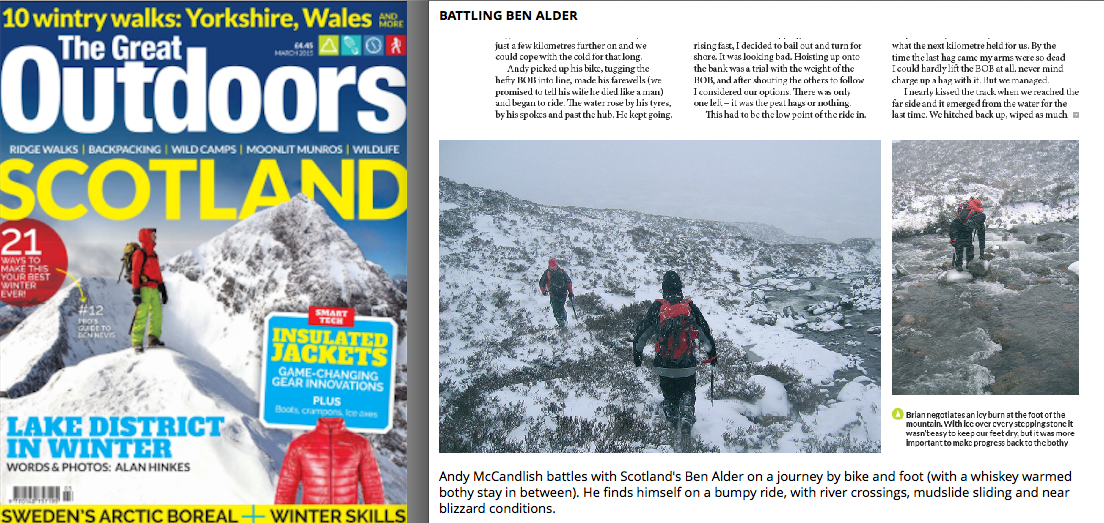
Publications suitable for featuring Skaters
When I started looking at magazines aimed at skaters I first found the American Magazine 43. However, the photographs in this feature more on action shoots and has little diverstiy or information about what is being shown, so is more like a photobook. This then led me onto find the magazine Grey. Grey is a independent London based magazine which heavily focuses on photography. Its also features interviews and portraiture of skaters. This would be a suitable publication for my idea as it has a clear audience. I havent been able to view a hard copy of this publication as its only available for free in skate shops in London.

Huck Magazine
Huck is a magazine which is based around sharing different radical cultures and communities. The magazine focuses on people and what they do rather than celebrities. Its orginates from its roots which focus on surf and skate, it has now diverse to have an interest in the arts as well.

Artist Research - Richard Renaldi
Richard Renaldi has been working on the project 'Touch Strangers' since 2007. It involves approaching random people on the street who dont know each other and asking them to pose together for a photograph. Renaldi asks them to pose in intimate ways that you wouldn't usually unless you were with a friend or someone you loved.
Some of the people photographed didnt seems effected by this request and having to get into other peoples personal space, while others found it awkward which you can see through the photographs.
I looked at Renaldi's work as we have to do a group photograph later on in this project and I though this was an interesting way of doing it and creating interesting effects. It makes you think about how the way people interact with each other in photographs has an effect on what you believe about there relationship. Seeing people touching makes you think they must be close and know each other well. I will think about this when arranging my own shoots and the effect I am having by positioning people is certain ways.
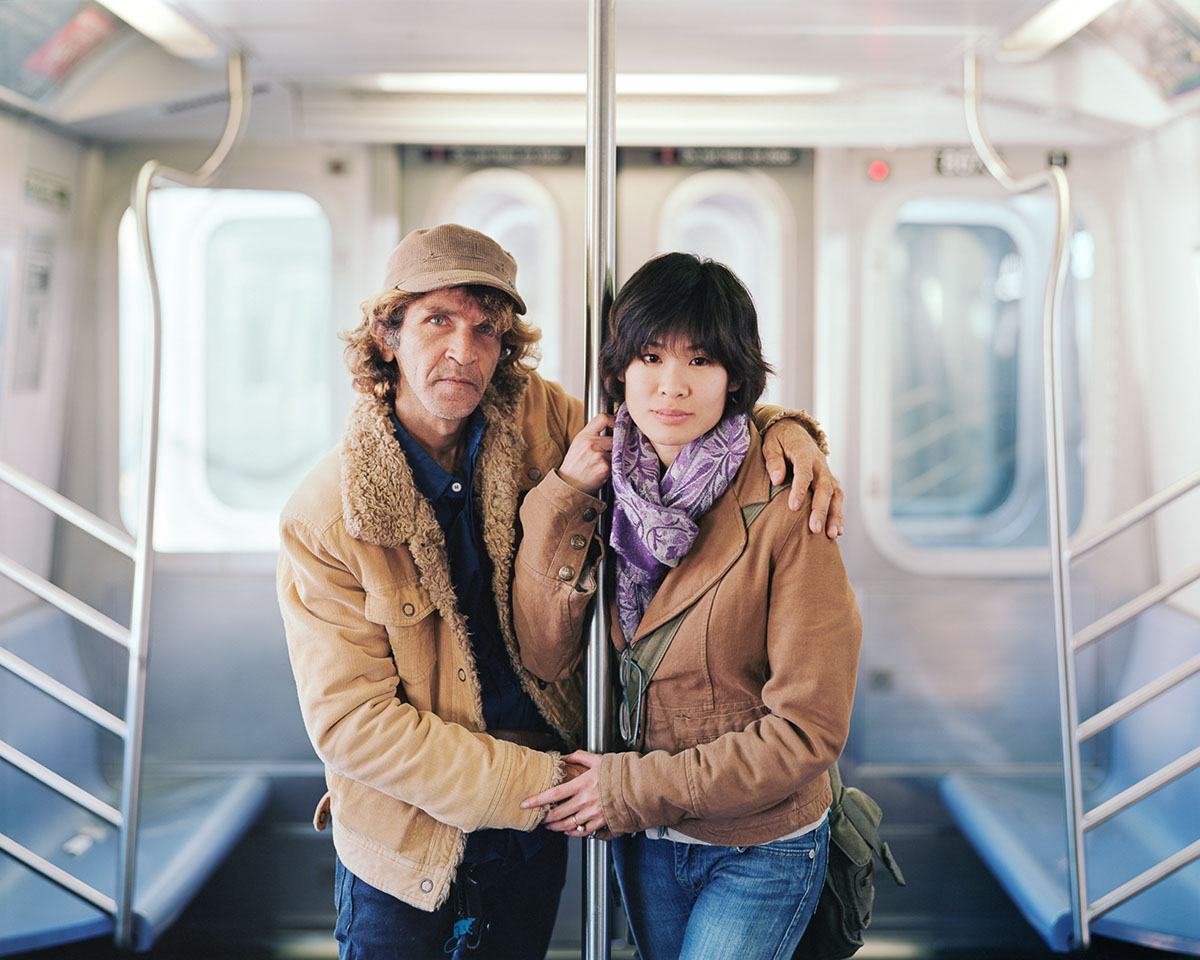
Richard Renaldi - Touching Strangers

Richard Renaldi - Touching Strangers

Richard Renaldi - Touching Strangers

Richard Renaldi - Touching Strangers
Artist Research - Edward Steichen, Charlie Chaplin, 1931
I looked at this portrait by Edward Steichen as it captures the personality of Charlie Chaplin. The used of the angle looking down towards him allows the whole of his shadow to be captured in the photograph. This shows that even though he is small the shadow represents his large personality and public figure. The way Chaplin is slightly looking down the smiling makes him look cheeky which is another part of his personality. While shooting for my own project I am going to have to think of way to portray by subjects personality to make the photographs more engaging with the audience.

Edward Steichen, Charlie Chaplin, 1931
Artist Research - Irving Penn
Looking at the use of light
This photograph has been taken making use of the natural daylight, you can tell this due to the soft contrast between the shadows and highlights. The light source is coming from the left hand side which can been seen due to the highlights in the glasses and shadows on the right hand side of the face. The light source would also be slighty higher than the subject as you can see shadows underneath the nose and mouth. The left hand side of the background is darker than the right. This would be due to something being place infront of the light source coming in from the left to prevent it from hitting that side of the photograph.
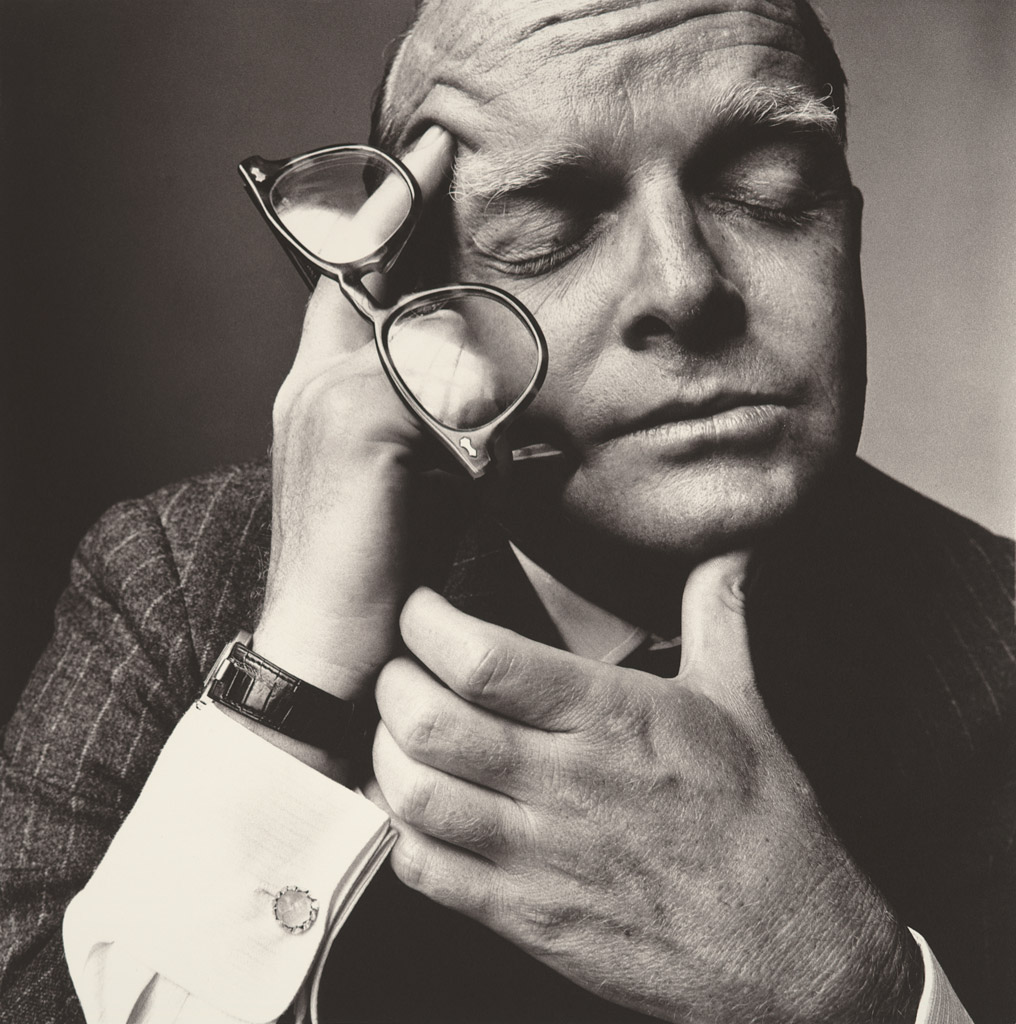
Photograph by Irving Penn
Development of Idea
My original Idea of photographing Ramblers could work but I need to push this idea further. The person who I though about photographing for this idea is retired and is now pursuing their hobby. An idea that came up from this was that I could look as people who have taken up news hobbies, or people who have retired and now do something different. This would give my project more of a focus and give me a wider variety of different people I could photograph.
What to consider when shooting for my project:
- Where the gutter of the page will go
don't want to have the middle of someones face in the gutter
- composition in the square
do I need space for titles or captions, how does the subject fit into the space
- what clothes the subject is wearing and the colours around them
this can effect the shadows and highlights
Finding a Publication
- I am finding it hard to find a publication suitable for my portraits as a lot of magazines are
aimed at people interested in one certiain hobby rather than just in what people do in general
- I need to find a culture magazine that look at more than one aspect so that my project will fit in
Places to find people to photograph
- Cheltenham Camera Club
- Cheltenham Bowls Club
- Cheltenham Gardening Club
Research - Joseph Smith

This photograph by Joseph Smith is called ‘Companions’ and was shortlisted for exhibition in the Taylor Wessing Portrait Prize in 2014. Joseph Smith is a photographer and artist who is a member of Malta Photographic Society.
The lighting in this portrait is natural daylight from a large light source on the left hand side, such as a window. You can tell this as the light hits most of the room and there are no other main light sources or fill in light as the right hand side of the subjects face is in shadow. The moving of the subjects face towards the light has allowed for more of it to be highlighted and not in the shadow. I will need to think about the positioning of my subject and the way the light falls on them when doing my own shoots. I will also have to pay attention for what they are wearing and the way that reflects the light up onto their face. I liked the simplicity of the lighting used in this photograph.
Updated Project Proposal
What am I photographing?
I am going to photograph clubs and societies that people take part in around Cheltenham.
Why am I photographing?
I am going to photograph this as there are lots of clubs and societies that take place which you never hear about. I want to discover more about these clubs and the and the people that go.
Who am I photographing?
I am hopefully going to photograph four different individuals that belong to separate clubs. This will allow be to produce four different photographs. I want to get clubs that differentiate a lot from one another to show how diverse the options in the area are.
Where am I going to photograph?
I will photograph in areas relating to the club/society the subject belongs too, or with things that relate to their project.
Publication Research
I have found it hard looking for a magazine suitable for featuring a variety of different hobbies or magazines aimed at retired people. This is due to the fact that most magazines about hobbies have choosen just one to focus on and cover that in depth. Also magazines aimed at retired people tend to be about money and places to live which feature little photographs and are not the topics I am intrested in. I then decided to look at magazines related to Cheltenham and the area that I will be exploring the differnet hobbies availble. This lead me onto finding Cotswold Life Magazine.
Why I think this publication is suitable
- Featured aspects about the local area, has features of towns and city's all over the cotswolds
- Looks at all aspects of local peoples life and suggests a variety of things to do
- It looks at not only what is avaliable to do but also the people behind what is happening and the interests of local people
''We publish an inspirational magazine for a local audience with content that perfectly reflects our readers' lives and interests, showcasing and championing the best things about local life.'' Cotswold Life.

First Practice Shot with the Hasselblad
This was my first practice shoot with the hasselblad as I wanted to be confident with using it before I went on my first shoot. I was happy with how they turned out as they came out well exposed and focused.





Recreating the lighting within a Portrait
I looked at the lighting used in the portrait of Marilyn Manson which was published in the Spring 2015 issue of Dazed Magazine and online. The photograph was taken by Jeff Henrikson. I tried to recreate the photograph that I chose to use in the studio on my digital camera and make the lighting as similar as possible.

This photograph below was the photo I was replicating...

To replicate this photograph I will need to have a light source coming from high above the subject on the right hand side. Its a harsh light that’s been used as you can see the pores on his skin and the high contrast between the shadows and highlights, so I am going to use a dish light rather than a soft box.

Review of recreation from lesson
· Looking back at this shot I should have used a slightly wide-angle lens for the recreation of this. This would have given the slight distortion of the face, which is missing from my photograph.
· I also should have used a stronger light source to make a harsher light.
· On the photograph I was trying to recreate you can see the pores on the skin where as my photograph is a lot more flattering as the light is slightly softer.
· The shadows from the model on my photograph have worked well though especially with getting the shadow from the middle finger on the hand.
· I also should have placed my model closer to the background if I wanted to pick it up like in the image I was recreating.
I found it hard to get the lighting in the right position to replicate the lighting and it took longer than I though it would to get it looking similar. To start with I wasn't putting the light source high enough and above the subject enough, which was leaving to much of the face and neck in shadow. However, I am pleased with the end result even though it is not perfect. I also feel my use of studio lighting has improved through out this task.
Lighting diagram:

Project Development - Subjects to Photograph
I have only been able to get responses and permission to photograph two different clubs around Cheltenham. This will make it harder as I will need to have two different shots from each shoot that I do as I don't want my photographs looking repetitive. I have heard back from Montpellier Quilters and the CAMRA (campaign for real ale club). Only one individual from each club is up for being photographed so I am going to have to find suitable placed to photograph each of them.
Research - Peter Marlow
In 2011 Peter Marlow photographed clubs and groups around Britain. Peter Marlow is a britsh photographer and member of Magnum photography. He mainly photographs in colour as he likes how colours of certain objects can change the photograph and effect it the same the way that shapes do in black and white photographs.
This set of photographs based around clubs and hobbies in Britain was published in FT Magazine. This was to show that Britain is not as lonely as people are making it out to be and lots of people meet socially every week from a range of different backgrounds and of all ages.

The photographs are not the main feature of this article. The photographs have been uploaded in low resolution so you cant even see them properly. In my project the photographs are going to be the main feature.I am going to need to find a way of making my photographs different so the set of four does not look to repetative. However, I also need to make sure they look like a collection and work together. In a publication it is more than likley to be more than one of my photographs on a page spread which would not work if they didnt work together.


Peter Marlow - GB. England. Swindon. 'Tech Heds Robotics"

Peter Marlow - GB. England. Essex, Chelmsford. 'Chelmsford Doll's House Club'.
I like this photograph above as it captures the fun and socal side to the group as well as what is going on. This provides some variety from group shot photographs. Allthough it is not entirly clear what is going on from this photograph, but it hints as it and with the accomanying writing it would become clearer.
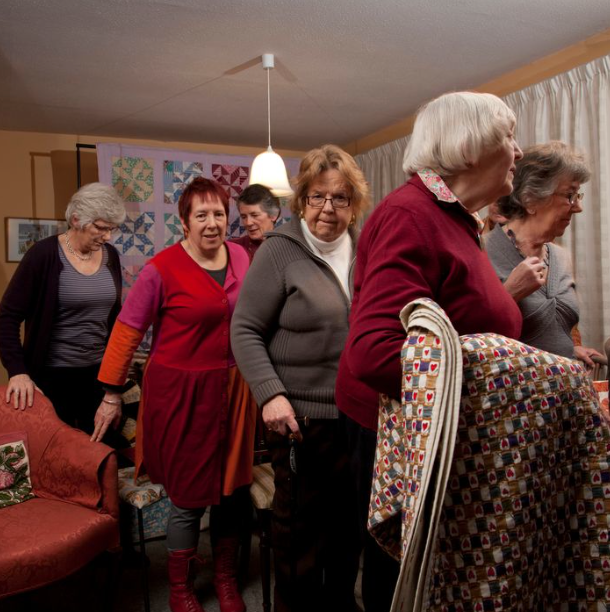
Peter Marlow - GB. England. London, Dulwich. 'The Dulwich Quilters'

Peter Marlow - GB. England. London, Dulwich. 'The Dulwich Quilters'
The use of colour photograph is effective in these quilting photograps as it draws more attention to their work. They have also used those colours on their quilts for a reason so I feel that if it was taken in black and white the work would not be being shown properly. I like how the clothes they are wearing are just as bright and colourfil as the quilts which makes it look like they belong their and reflects there hobby well.
I am going to photograph a quilter soon. I need to make sure that there will be some of their work to hand that I can photograph them with to give the photos context. I will also photograph in colour as colour is part of the hobby and I feel that side needs to be shown. I like the interaction of the quilters and the viewers when they hold up the quilts and are photograhed. This gets the viewer to look at the quilt as well at the person. I am going to have a look at taking photographs like this to make the quilts a main feature of the image.
Montpellier Quilters
Montpellier Quilters are a club based in cheltenham that enjoy patchwork and quilting. They have members from cheltenham and the surroundings areas. They meet every first and third thursday of the month in Cheltenham and have a range of events from speakers to making quilts for charity.
I am going to be photographing Vanessa Reynolds. She is an experience quilter who went to her first Montpellier Quilters meeting in 1998 and has loved it ever since. Some of Vanessa's quilts are featured on the website page below:
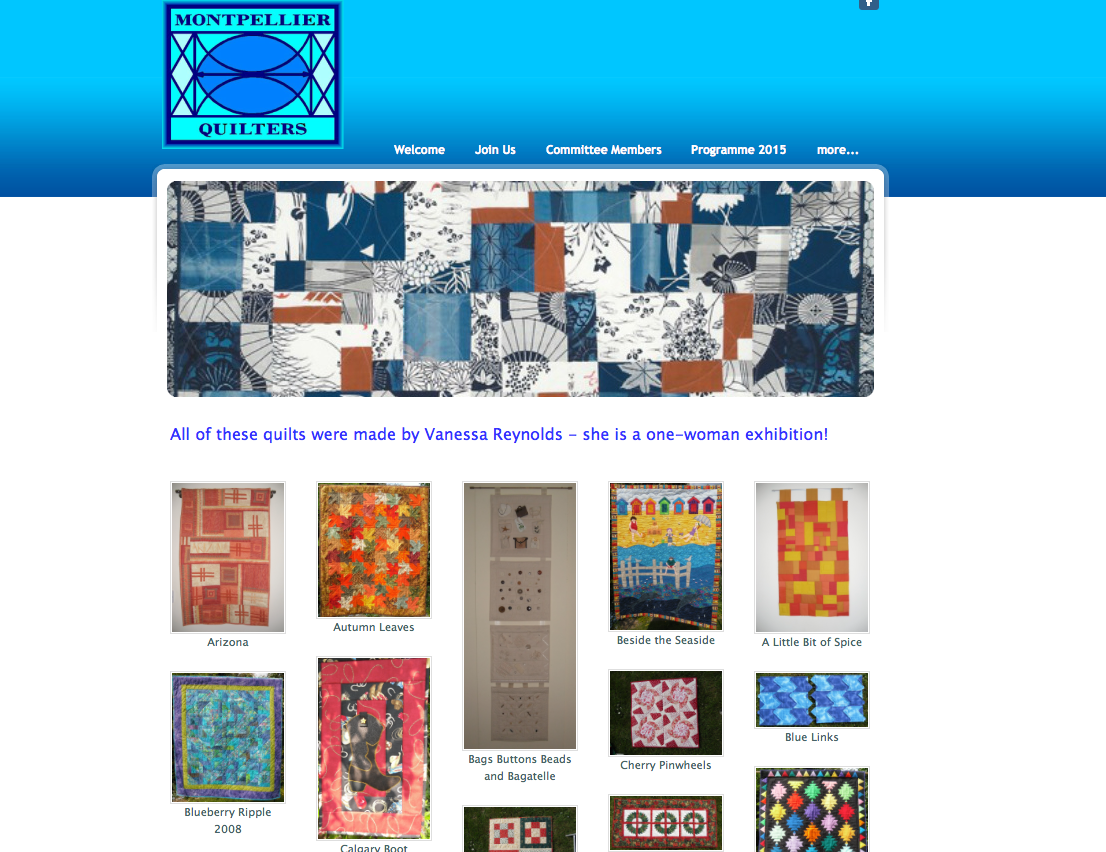
Plan for shoot:
I am photographing Vanessa at the head of the quilters club Janet White's house. I am going to be photographing inside so I will bring my speedlight flash and umprella as a light souce. There is also a conservatory so i will look at balancing natural light with flash like we have in lessons. I also need to incorporate Vanessa's quilts into the photographs and capture the colours and details in them.
CAMRA club
I am also going to be photographing someone from the CAMRA club. The CAMRA club is the Campaign for real Ale and takes place all over the country and is open to anyone of drinking age.


CAMRA has its own branch in Cheltenham and is based at

